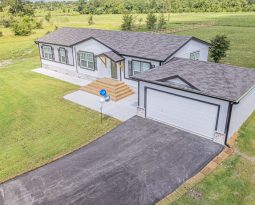Corporate Landlords Are Gobbling Up Mobile Home Parks And Rapidly Driving Up Space Rents – Here’s Why These Investments Are So Attractive To Them
(The following report contains excerpts from MoneyWise analysis penned by Vishesh Raisinghani via Yahoo!)
The hunt for yield has pushed private equity firms and professional investors into new segments of the real estate market.
In recent years, sophisticated investors have snapped up multi-family units and single-family homes. Now, corporate landlords are targeting the most cost-effective segment of the real estate market: mobile home parks.
The most affordable housing available
Manufactured homes or mobile homes are considered the most affordable non-subsidized housing option in America. That’s because mobile homeowners own only the home and not the land under the home. The land is usually leased from the landlord of a mobile home park.
The average monthly rent for a mobile home in 2021 was $593. That’s significantly lower than the average one-bedroom condo rental rate of $1450. The mobile home park rental also often includes utilities and insurance.
Rents typically rise 4% to 6% annually and renters have the flexibility to move their housing to another park (an unlikely occurrence because of costs and lack of mobile home park space availability in most areas of the country)… These factors make the manufactured home highly attractive to low-income households.
As of 2020, nearly 22 million Americans lived in mobile homes or manufactured homes. That’s 6.7% of the total population or about one in 15 people across the country. However, the economic inefficiencies that make these manufactured homes affordable also make them attractive to professional investors.
Investing in mobile home parks
Factors such as below-market rents and disrepair make mobile home parks attractive for investors seeking to add value. The typical mobile home park lot costs $10,000, which means 80 lots would be worth $800,000 on average.
Put simply, the entry price for these parks is much lower than for multi-family apartments and condo buildings across the country.
Professional investors can also raise rents significantly to improve the valuation of the property. Attracting tenants with higher incomes or improving the park’s amenities and infrastructure are other value-add strategies that make this asset class appealing.
The fact that moving a typical mobile home costs between $3,000 to $10,000 also means that most tenants are unable to afford the move. This gives landlords immense pricing power.
Meanwhile, the yield is much higher. The capitalization rate (the rate of net operating income to market price) could be as high as 9%, according to real estate partners Dave Reynolds and Frank Rolfe, who together are the fifth largest owner of mobile home parks in the U.S.
The largest mobile park landlord is real estate veteran Sam Zell’s Equity Lifestyle Properties (ELS) owns 165,000 units across the country and the asset is a key element of his $5.4 billion fortune.
Retail and institutional investors could see more upside from this segment as the economic inefficiencies are ironed out.







